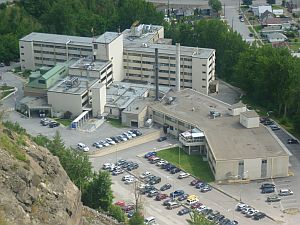New CT scanner benefits regional patients
A new state-of-the-art CT (computed tomography) Scanner will improve diagnostic support for services provided at Kootenay Boundary Regional Hospital.
“This is excellent news for patient care in the Kootenay Boundary area,” said Health Minister Margaret MacDiarmid. “The new scanner will provide faster, higher quality images to support the care clinicians are already providing. We are very pleased to support this significant upgrade for regional patient care.”
The new scanner is a 64-slice GE Optima 660 and replaces the older 32-slice scanner at KBRH that is now requiring regular, ongoing maintenance and is in need of replacement.
The new scanner has twice as many detector rows (64 versus 32) as the old unit. That means that it can either scan the same region twice as quickly, or with more detail.
The system’s advanced computer and software processing also improves the scan speed, while at the same time lowering radiation dose. In addition, this is GE’s first scanner designed with a “green” philosophy. It is built to have more recyclable components, takes less power, and requires less cooling than the older scanners.
“Interior Health recognizes the importance in having the latest technology to support the services at our regional centre in Trail,” said Interior Health Board Chair Norman Embree. “I’m pleased to see this important upgrade that will benefit patients from across the Kootenay Boundary.”
Interior Health expects the new CT Scanner will be delivered in December and anticipates the unit will be fully operational by January.
By trading in the current unit and taking advantage of other rebates Interior Health was able to secure a highly favourable, time sensitive price for the new unit for Trail. The Ministry of Health is funding $300,000 through Interior Health and the West Kootenay Boundary Regional Hospital District is contributing $200,000 towards the $500,000 total cost of the scanner.
“The RHD directors felt it was important to support our regional facility through this investment,” said RHD Board Chair Marguerite Rotvold. “Our contribution to this new CT Scanner and to other important capital projects and equipment show this Board’s commitment to all the residents we serve.”
CT provides detailed, cross-sectional views of all types of tissue. It is often the preferred method for diagnosing many different cancers and plays a role in the detection, diagnosis and treatment of a variety of vascular disease, spinal problems and injuries because it can clearly show bones, muscle and blood vessels in highly detailed cross sections. Non-invasive assessment of coronary arteries with CT is one of the most promising applications for this latest generation scanner.






















